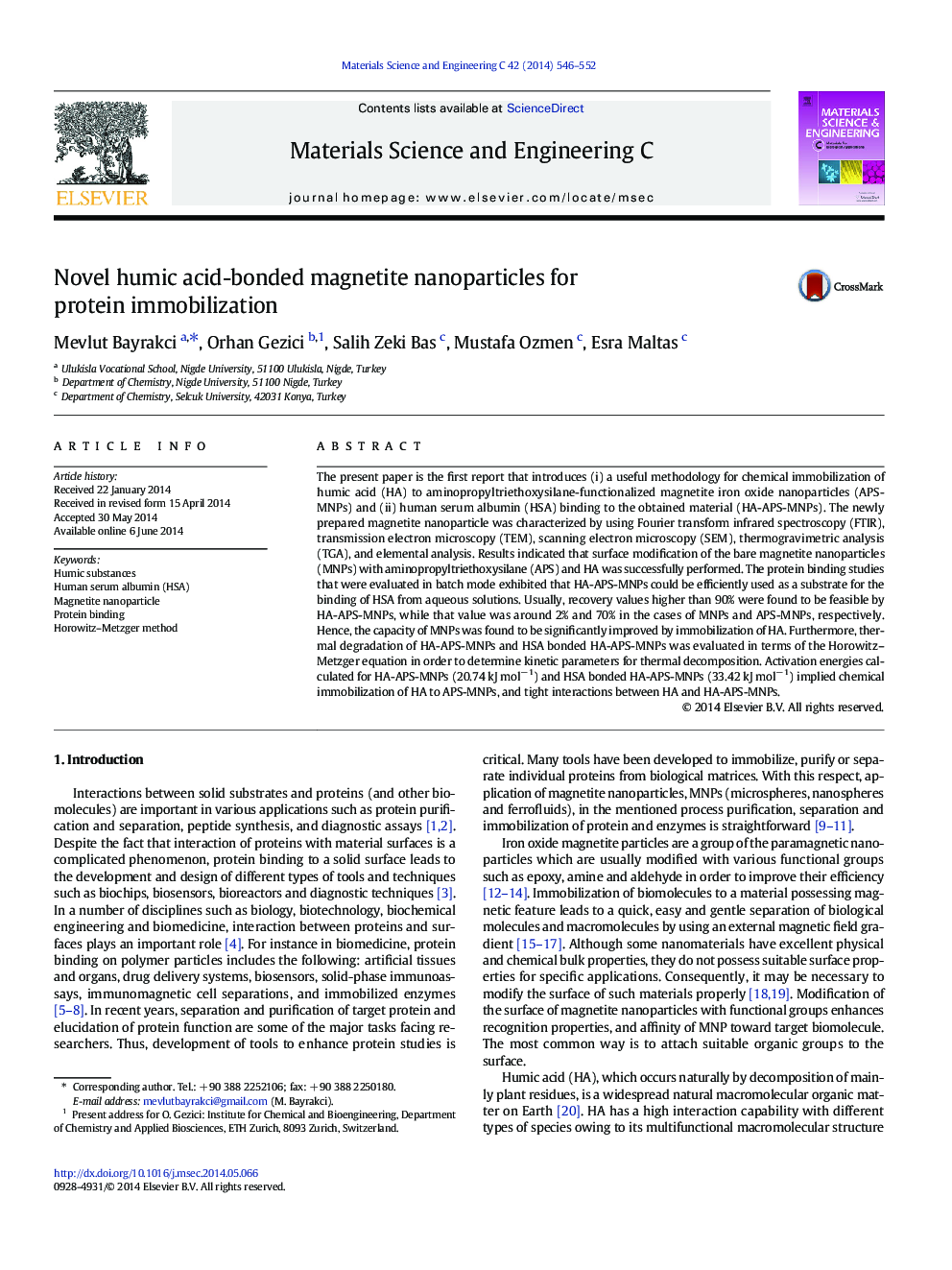| Article ID | Journal | Published Year | Pages | File Type |
|---|---|---|---|---|
| 1428668 | Materials Science and Engineering: C | 2014 | 7 Pages |
•A new magnetite nanoparticle based humic acid was prepared for the first time.•Protein binding studies of magnetite nanoparticle based humic acid were performed.•Kinetic parameters of protein and/or humic acid bonded nanoparticles were evaluated.
The present paper is the first report that introduces (i) a useful methodology for chemical immobilization of humic acid (HA) to aminopropyltriethoxysilane-functionalized magnetite iron oxide nanoparticles (APS-MNPs) and (ii) human serum albumin (HSA) binding to the obtained material (HA-APS-MNPs). The newly prepared magnetite nanoparticle was characterized by using Fourier transform infrared spectroscopy (FTIR), transmission electron microscopy (TEM), scanning electron microscopy (SEM), thermogravimetric analysis (TGA), and elemental analysis. Results indicated that surface modification of the bare magnetite nanoparticles (MNPs) with aminopropyltriethoxysilane (APS) and HA was successfully performed. The protein binding studies that were evaluated in batch mode exhibited that HA-APS-MNPs could be efficiently used as a substrate for the binding of HSA from aqueous solutions. Usually, recovery values higher than 90% were found to be feasible by HA-APS-MNPs, while that value was around 2% and 70% in the cases of MNPs and APS-MNPs, respectively. Hence, the capacity of MNPs was found to be significantly improved by immobilization of HA. Furthermore, thermal degradation of HA-APS-MNPs and HSA bonded HA-APS-MNPs was evaluated in terms of the Horowitz–Metzger equation in order to determine kinetic parameters for thermal decomposition. Activation energies calculated for HA-APS-MNPs (20.74 kJ mol− 1) and HSA bonded HA-APS-MNPs (33.42 kJ mol− 1) implied chemical immobilization of HA to APS-MNPs, and tight interactions between HA and HA-APS-MNPs.
Graphical abstractFigure optionsDownload full-size imageDownload as PowerPoint slide
